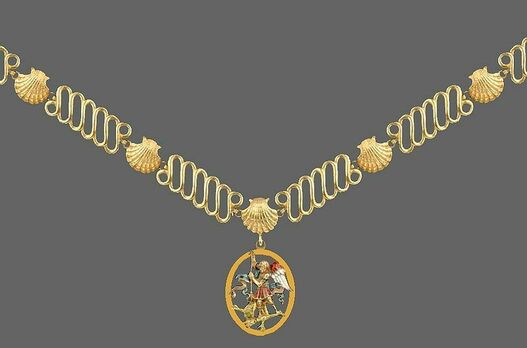Order of Saint Michael, Collar
SKU: 01.FRA.0102.101.01
Estimated market value:

Estimated market value:
Attributes
History
The Order of Saint Michael was founded by Louis XI on August 1, 1469 in Amboise. It was the highest Order of Chivalry until the creation of the more prestigious Order of the Holy Spirit in 1578.
The Order of Saint Michael was awarded in recognition of distinguished service in the fields of arts and sciences, and for bringing honour to the state. The French government even considers this Order to be the precursor of the Order of Arts and Letters.
At the time of its formation it was composed of 36 knights, a treasurer, a scribe, and a herald of arms. In 1476 a prevost and a master of ceremonies were added. Under Charles IX there were 50 knights. By the time, the Order had fallen out of favour in 1578 there were up to 1500 members.
All members of the Order of the Holy Spirit were named members of the Order of Saint Michael.
The Order was suspended during the Revolution on July 30, 1791, revived in 1814 by Louis XVIII, and permanently abolished in 1830.
The motto of the Order was “Immensi Tremore Oceani,” which translates to “The tremor of the immense ocean.”
The Collar was supposed to be worn at all times, even in private. The collar was progressively abandoned beginning in 1560. A pendant was permitted in place of the Collar and was called "the small order."
The collar was officially replaced by Louis XIV during a period of reform in the years 1661-1665. Its replacement was a Maltese Cross enamelled in white and green, with the image of Saint Michael slaying a serpent on both faces. This Cross was also worn into the Restoration period.
There are only three surviving examples of the Collar, which reside in public collections. The pendants, despite their rarity, are more common than the Collar.
As a result of its rarity, there is limited information regarding this item.

Versions
N/A
Gold/Enamelled
The picture of the Collar is an example of early 19th century. The image of the Collar is attributed to Robert Prummel sur Wikipédia néer...


Comments
Sign in to comment and reply.


Scroll Top